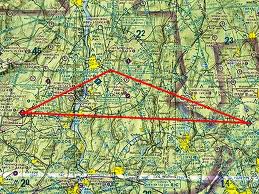Grandpa may have told you in the past that the quickest way between two points is a direct line. The route with the least amount of turns can prove to be the fastest. If you are a fan of Nascar you will notice as the drivers round the track they will ride high on the straight away and down low on the turns. In doing this it enables the drivers to take the turns quicker. Turns are a requirement of Nascar but not so in aviation.
If we choose to take the direct route on a trip from point A to point B is that necessarily wrong? No, but is it always right? No again. For the answer to this we ask Matt Conway, chief flight instructor of American Flyers of Atlanta located at the KPDK airport.
On the topic of “Advanced Navigation” Matt notes several factors in which need to be considered when developing a cross country flight plan. 1. Route planning 2. Check points 3. Altitudes 4. Airspace avoidance
When choosing a heading and altitude you should note the winds aloft at several different altitudes along your planned route of flight. You will not only want to check winds on your route but off the route as well. For example, let’s say your route took you on an easterly heading of 090 degrees and the winds aloft at 8000’ were 310@20kts. You may, (depending on the terrain and airspace of course) find that flying a lower altitude to a check point north east of your route then intercepting a higher altitude for the remainder of the trip will not only produce a quicker ETA but also due to the tail wind you will have on your second leg will also reduce fuel usage as well.
Be sure to also consider other factors such as weather, MOA’S, restricted areas, mountainous terrain, airspace and any other factor which may affect your travels. Always remember, It is much easier to plan on the ground and make small adjustments in the air then to try to figure it out at 8000’.
Tommy Eldridge



